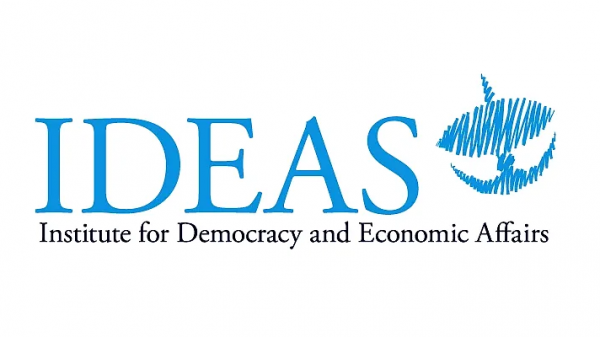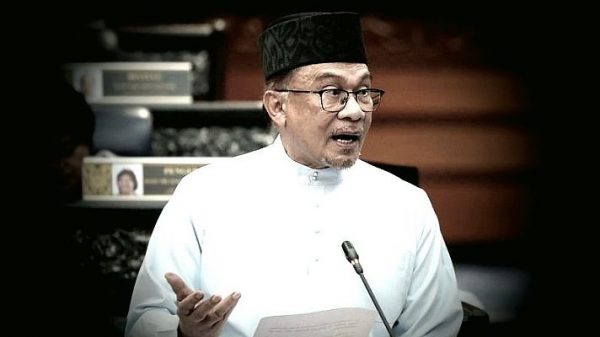KUALA LUMPUR: Borrowings for 2023 are expected to reach 12.2 per cent of gross domestic product (GDP), lower than the initial projection of 14 per cent, which includes financing for development programs and projects in the Third Rolling Plan under the 12th Malaysia Plan (12MP), as well as redemption of 1MDB bond maturing in March 2023.
The Ministry of Finance (MoF), in its Updates on Economic and Fiscal Outlook and Revenue Estimates 2023 report, said the Sustainability Malaysian Government Investment Issues (Sustainability MGII) would be reopened in the first quarter of the year, signifying the government’s commitment to supporting the sustainable, inclusive and resilient agenda.
Consequently, the MoF said that the federal government debt is estimated to reach around 62 per cent of GDP by end-2023, lower than the initial estimation of 63 per cent.
In addition, it said the implementation of public-private partnership (PPP) projects would be enhanced through the PPP 3.0 model, which provides a strategic framework in terms of governance, service delivery, financing and approach for projects to achieve better outcomes and value for money.
“The government is committed to gradually reduce federal government debt to pre-pandemic level and rebuild fiscal space to encounter future uncertainties,” said MoF in the report released today.
Debt services charges
As for debt services charges (DSC) last year, the amount stood at RM41.3 billion or 2.3 per cent of GDP compared to the initial projection of 15.1 per cent, while in terms of DSC-to-revenue, the ratio improved to 14 per cent as growth in revenue was higher than DSC.
“The financing cost for domestic issuances is RM40.6 billion and RM700 million for offshore borrowings. Given the low proportion of foreign currency debt, the impact of exchange rate volatility on the cost of external financing is minimal,” it said.
The MoF said the weighted average yield for outstanding domestic debt as at end-2022 remained stable at 4.031 per cent despite the increasing global interest rate environment.
As at September 2022, it said the composition of resident and non-resident holdings in the federal government debt was 75.2 per cent and 24.8 per cent, respectively.
Resident investors increased their holdings to RM807.8 billion, and non-resident holdings remained stable at around RM267 billion.
Federal government debt
The MoF noted that the federal government debt stood at RM1.08 trillion or 60.4 per cent of GDP as at the end of 2022, and the outstanding debt for each instrument remained within the statutory limit specified under the respective Acts.
In 2021, it stood at RM979.81 million or 63.4 per cent of GDP.
The federal government debt comprises 97.3 per cent of ringgit-denominated securities, while the balance of 2.7 per cent was in foreign currencies, which minimizes the exposure to foreign exchange risks.
“Domestic debt was recorded at RM1.05 trillion primarily consisting of medium- and long-term securities, namely Malaysian government securities (MGS) and Malaysian Government Investment Issue (MGII) with a share of 51.2 per cent and 44.9 per cent of total domestic debt, respectively, as well as Sukuk Perumahan Kerajaan (SPK) amounting to RM9.1 billion or 0.9 per cent,” it said.
Meanwhile, short-dated instruments, namely Malaysian Treasury Bills and Malaysian Islamic Treasury Bills, accounted for RM31.5 billion or three per cent of total domestic debt.

Malaysia’s external debt
Meanwhile, Malaysia’s external debt grew by 8.1 per cent to RM1.17 trillion or 65.4 per cent of GDP as at the end of September last year, mainly due to higher offshore borrowings and non-resident deposits as well as foreign currency exchange rate valuation effects following the appreciation of the US dollar.
“Offshore borrowings have increased to RM646.7 billion or 55.3 per cent of the total, attributed to higher interbank borrowings and net foreign currency-denominated loans by the private sector.
Non-resident holdings of ringgit-denominated debt securities and deposits increased to RM365.7 billion, contributed by higher deposits of RM111.4 billion, while other external debt increased to RM157 billion following higher trade credits.
Public sector debt
The report also pointed out that public sector debt, comprising outstanding debt obligations of the federal government, state governments, statutory bodies and non-financial public corporations (NFPCs), increased by seven per cent to RM1.48 trillion or 83 per cent of GDP as at September 2022.
“Statutory bodies guaranteed debt increased to RM95.2 billion contributed by the net issuance by Public Sector Home Financing Board (LPPSA), Perbadanan Tabung Pendidikan Tinggi Nasional (PTPTN) and Federal Land Development Authority (Felda).
Debt and liabilities exposure and other liabilities
Total debt and liabilities exposure was estimated at RM1.44 trillion or 80.9 per cent of GDP last year compared to RM1.36 trillion in 2021.
“Debt and liabilities exposure comprise of federal government debt, as well as other financial obligations consisting of committed guarantees, 1MDB debt and other liabilities, namely commitments of projects under PPP and private financing initiatives (PFI),” it said.
As at end-2022, MoF said commitment for PPP projects and financial obligations of PFI projects amounted to RM142.2 billion, with 105 ongoing PPP projects with an estimated commitment of RM92.1 billion, whereas outstanding PFI liabilities were estimated at RM50.1 billion.
Financing
Meanwhile, the federal government’s gross borrowings for 2022 recorded RM230.9 billion or 12.9 per cent of GDP compared to RM210.1 billion in 2021.
“More than half of the gross proceeds amounting to RM131.5 billion was utilized for principal repayments and balance for deficit financing, including spending for Covid-19 assistance packages,” it said.
The MoF noted that domestic borrowings remained the primary source of funding given the sufficient liquidity in the market, in which issuance of MGS registered RM86.5 billion of total gross borrowings, and MGII amounted to RM85 billion.
“In addition, treasury bills amounting to RM59.4 billion were raised for the government’s cash and liquidity management,” it added.
ADVERTISEMENT
ADVERTISEMENT








































